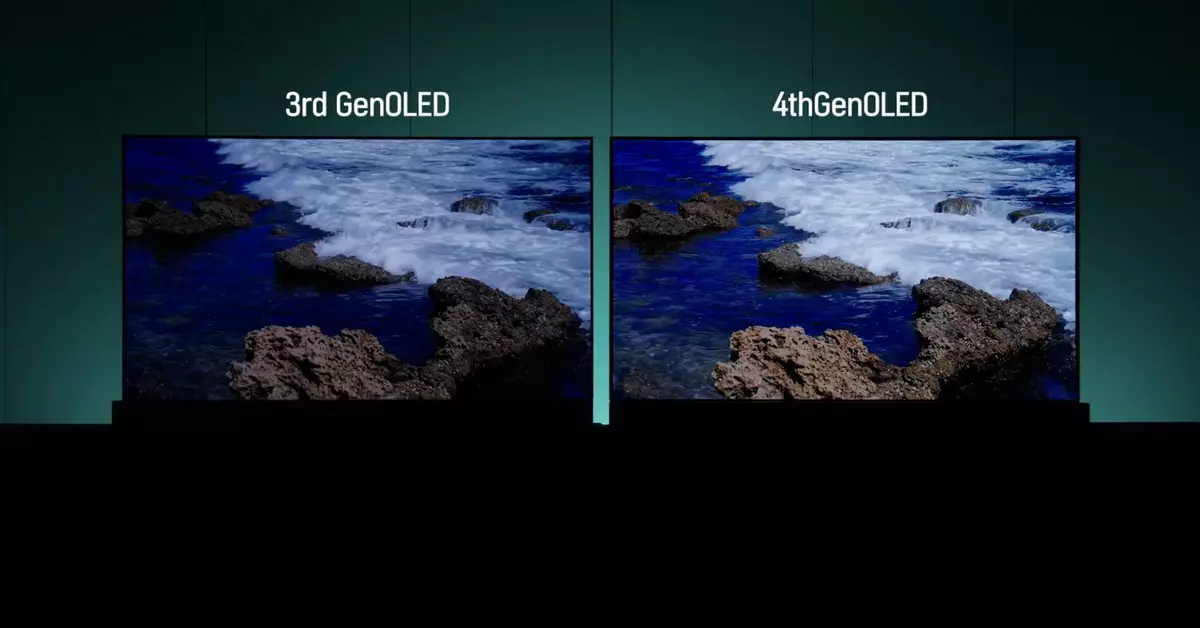In the realm of home entertainment, OLED (Organic Light Emitting Diode) technology has continually impressed consumers with its vibrant colors and deep contrast ratios. As competition heats up among industry giants, LG Display has recently announced significant advancements in OLED technology that may set the standard for future televisions. Despite not prominently showcasing their innovations at CES 2025, LG’s new four-layer tandem OLED is generating considerable excitement in the tech community. This article delves into the intricacies of LG Display’s latest offering, analyzing its innovative features and what they mean for both consumers and competitors in the market.
At the heart of LG Display’s new panel is its groundbreaking four-layer tandem design, which aims to address the persistent challenge of brightness in OLED displays. Traditionally, OLEDs utilized a three-stack structure composed of blue, red, and green elements. However, LG’s new structure revolutionizes this by incorporating an additional two layers of blue elements alongside separate red and green layers. This innovative configuration generates enhanced brightness—and LG claims a staggering increase of 33 percent in comparison to its predecessor, achieving peak brightness levels that escalate up to 4,000 nits.
Such a perceptible increase in brightness not only allows for more vivid colors but also enhances the viewing experience in well-lit environments, mitigating the limitations that previously plagued OLED technology. Although this was announced alongside mention of artificial intelligence enhancements in TVs, which may seem a bit overhyped, it is crucial to recognize that the panel itself stands out for its technical achievements.
As OLED technology rapidly advances, competition is fierce, particularly with Samsung Display’s more recent breakthroughs in QD-OLED technology. While Samsung emphasizes glare-free finishes, LG retains a more classic glossy approach augmented by ultra-low reflective technology. This atmospheric difference could appeal to various user preferences. However, LG’s focus on maximizing brightness opens it up to potential criticisms of sacrificing some advantages of OLED in pursuit of sheer lumens.
The increasing trend towards brighter displays signifies the industry’s turning point, pushing the envelope of display technology further. With competing innovations, we must ask how these advancements will ultimately be balanced against consumer preferences and pricing structures.
The fourth-generation OLED panel isn’t solely concerned with luminous efficacy; energy conservation is another central tenet. LG has touted a 40 percent improvement in color brightness up to 2,100 nits. This kind of energy efficiency is vital, as consumers become more environmentally conscious and seek options that minimize power consumption while delivering high performance. It raises questions about how manufacturers will balance brightness capabilities with energy use in upcoming releases and whether consumers will be willing to invest in premium products with such features.
While peak brightness figures denote potential capabilities, they don’t always translate into real-world performance in consumer products. It remains to be seen whether manufacturers like Panasonic will leverage these high specifications in their offerings or if they will prioritize maintaining a certain price point for consumers.
LG Display’s latest innovations in OLED technology signify not just improvements in brightness but a holistic evolution that could redefine consumer expectations. As manufacturers continue to push boundaries, the interplay between brightness, color accuracy, energy efficiency, and price will shape the future market landscape. For consumers eager for an immersive viewing experience, LG’s advancements present an enticing option in what is sure to be a heavily contested arena. As the capabilities of OLED displays continue to unfold, tech enthusiasts would do well to remain informed and discerning in their selections, taking into account not just the numbers but the overall value these technologies bring to home entertainment.
LG Display’s new panel is definitely worth considering for anyone looking to future-proof their home theater system while enjoying the unmatched benefits that OLED technology has to offer.

